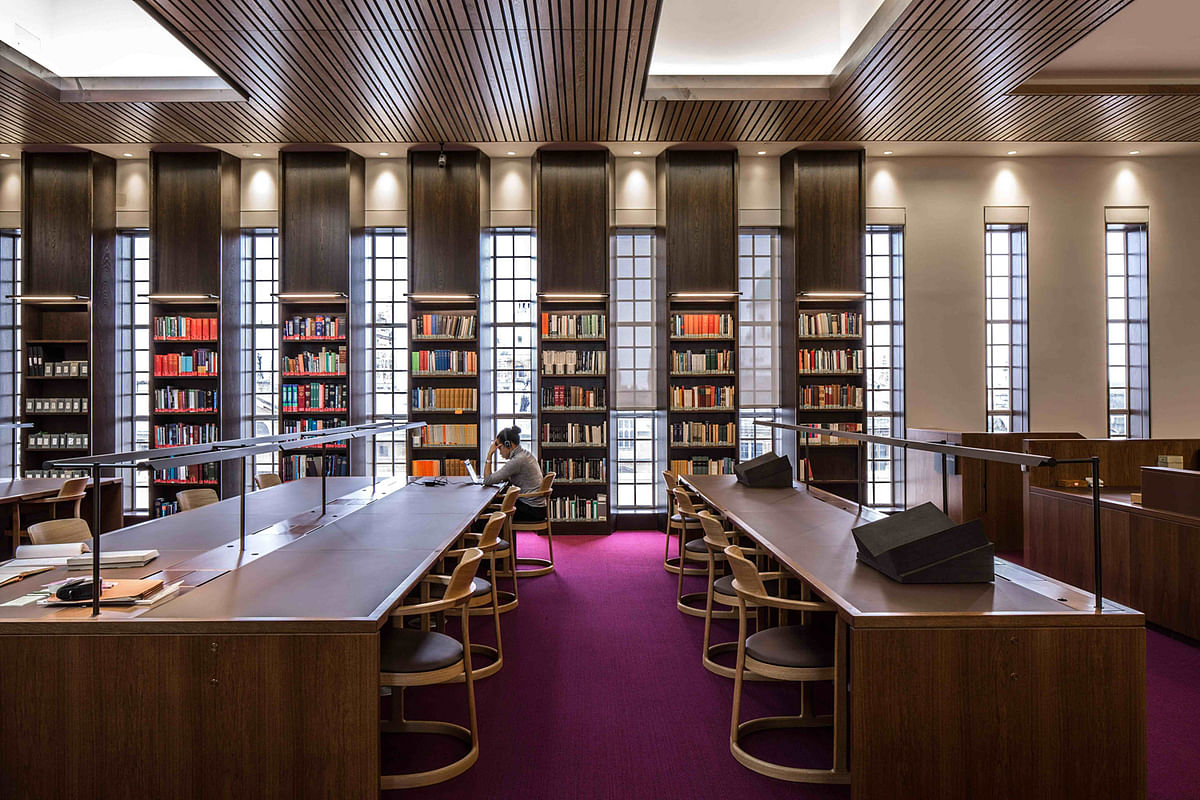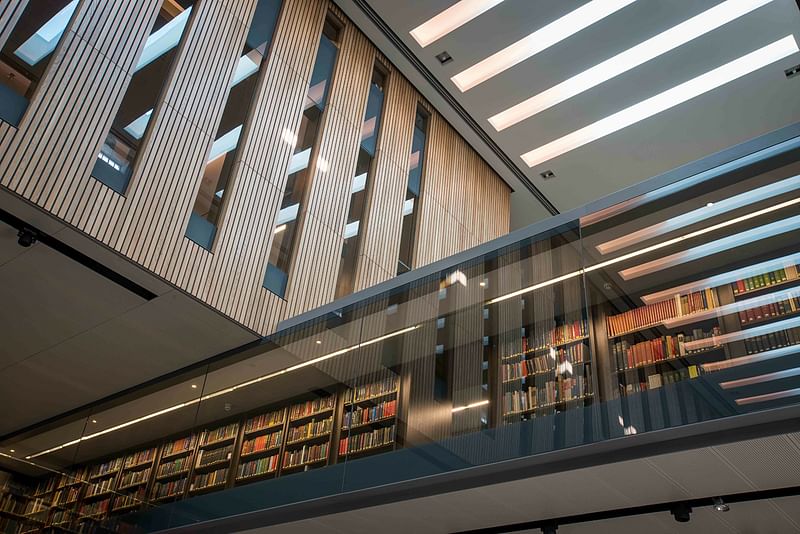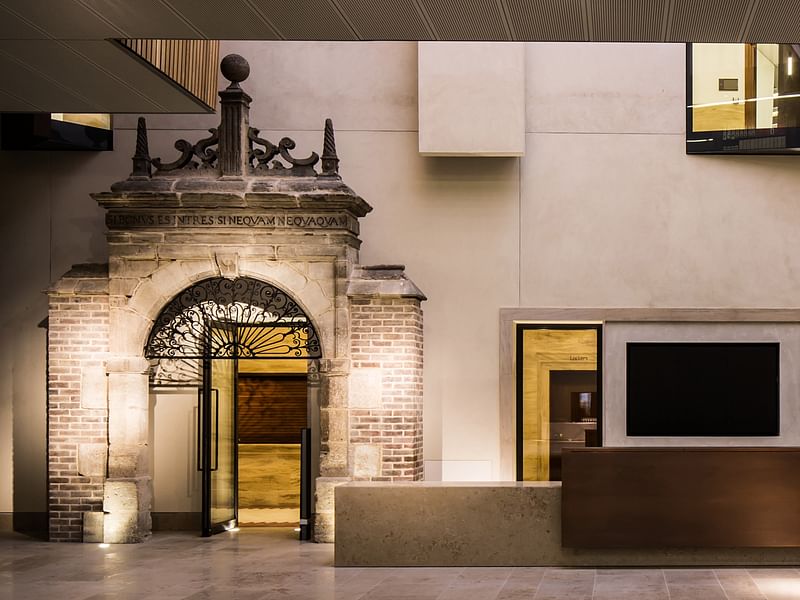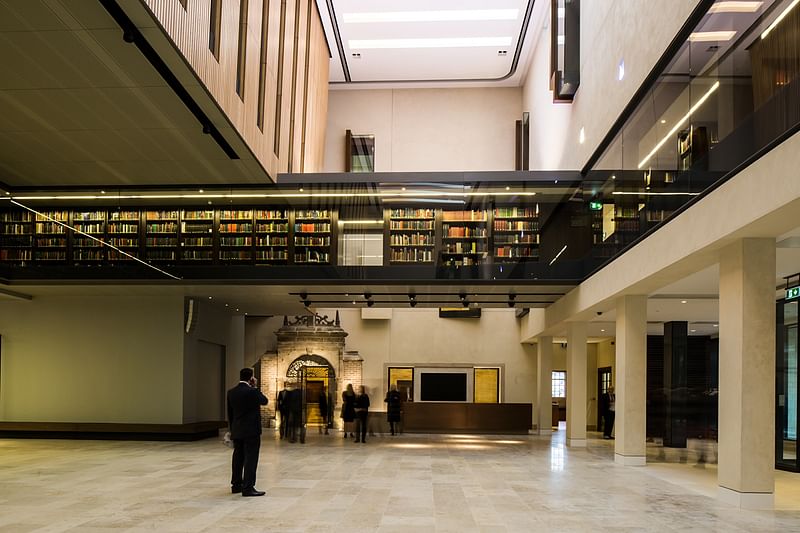Peek into Wilkinson Eyre's renovation of Oxford's reopened Weston Library
By Bustler Editors|
Thursday, Mar 26, 2015

Related
The University of Oxford recently celebrated the re-opening of their Weston Library in the institution's renowned Bodleian Libraries, a Grade II building designed by Sir Giles Gilbert Scott and constructed in the 1930s. Fellow Brits Wilkinson Eyre Architects were in charge of the £80 million (approx. $119 million) renovation, as part of the Bodleian's ongoing efforts to better preserve -- and promote -- their vast special collection of historic books and manuscripts.
As if the collections weren't already enough, the refurbishment includes several new features like reading rooms, research and media facilities, exhibition galleries, a lecture theater and seminar rooms, and connectivity to neighboring structures.
Project description:
"The much-anticipated project has created high-quality storage for the Libraries’ valuable special collections, which have been preserved for scholarship; developed the Libraries’ space for the support of advanced research; and has expanded public access to its great treasures via its new exhibition galleries and a lecture theatre.
By opening up the building to promote its special collections to the wider public, Wilkinson Eyre has also addressed the building’s identity and related it more closely to its immediate context by improving its perception and approach. Once described as a ‘dinner jacket made of Harris Tweed’, the Weston Library is now successfully connected to the core Bodleian buildings."

"The new Blackwell Hall, supported by a £5m donation from Julian Blackwell, is a publicly accessible, top-lit 13.5 metre high space which forms the heart of the new library and features a café, information desk, a 16th Century tapestry map (the Sheldon Tapestry) and a 15th Century gateway on permanent loan from the V&A Museum.
The gateway originally led to the garden of the historic Dorner family’s estate at Ascott Park in Oxfordshire and was the only surviving structure following a fire in 1662. With the support of Oxfordshire Buildings Trust, the incorporation of this gateway sees this grand piece of architecture returned to its original home county in a new and unique setting, emphasising the theme of old and new that runs through the entire building."

"Blackwell Hall opens up to two new exhibition spaces and a café, creating a welcoming experience for the general public, being directly accessible through the new public entrance on Broad Street. Exhibition galleries have been added, along with other new facilities including a Digital Media Centre, a Visiting Scholars Centre, a lecture theatre, and a suite of seminar rooms to enable teaching and master-classes based on the library’s special collections.
These facilitate contemporary research practices and techniques, supporting the library’s academic users, as well as enabling public interaction with the library’s collections and treasures. The newly refurbished library includes world-class conservation workshops and facilities, where collections can be preserved in a secure and environmentally stable setting. The Bodleian’s Special Collections experts will now all be co-located in the building with their Conservation colleagues, as will the Centre for the Study of the Book."

"While carrying out the refurbishment and enhancement of this iconic library building, Wilkinson Eyre addressed major challenges with its infrastructure and upgraded its facilities without compromising the building’s charming, historic character. Scott’s original design replicated the typology of an Oxford University college but with the traditional quadrangle space in the centre occupied by an 11-story book stack based around a large complex of unprotected steel framework."

"With the New Bodleian previously struggling to meet national standards for the storage and exhibition of archival documents, Wilkinson Eyre’s renovation has now provided a safe repository for the nation’s literary treasures. The architects have revised the layout, removing the upper floors of this colossal central stack, and replacing them with a dedicated reading room and suite equipped with the latest research facilities. The three-story stacks underground have been partially rebuilt and upgraded to modern archival standards, and for the first time, controlled shafts of daylight permeate into the heart of the building."

Share
0 Comments
Comment as :